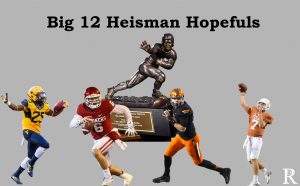BLOG: Future of WVU backfield on display in Heart of Dallas Bowl
December 16, 2017 by Ryan DeckerOn Thursday, the West Virginia football announced a pair of statements:
Quarterback Will Grier is returning to the Mountaineers for his senior season in 2018, and running back Justin Crawford will not play in the Zaxby’s Heart of Dallas Bowl against Utah later this month.
The first assures that an experienced quarterback will be leading the WVU offense next season, while the second means we’ll have a good idea of the talent that will be around him.
Although the bowl game would’ve served as one final game for senior running back Justin Crawford to put his talents on display, it now gives a glimpse at what the backfield will operate like next year without him.
Crawford battled a nagging injury during the middle part of the season, part of what contributed to him being held under 50 rushing yards for three straight games, but still managed to be one of just three Big 12 rushers to eclipse 1,000 yards on the ground this year.
He surpassed that mark in each of his two seasons in Morgantown.
Behind – or, now, replacing – Crawford is a pair of Mountaineer backs with experience and another that hasn’t gotten much action, though it can be anticipated that will change against Utah and next year.
Leading the way is sophomore Kennedy McKoy, who ran for a career-high 137 yards the last time West Virginia was on the field against Oklahoma. McKoy did a lot of his damage out of the wildcat formation, which is expected to be used again against the Utes.
Both Crawford and McKoy averaged over five yards per carry this season.
Behind McKoy is fellow sophomore Martell Pettaway, who had his coming out party two seasons ago against Iowa State when he rushed for 181 yards against the Cyclones on the same day his redshirt was burned.
Getting a very limited number of carries, Pettaway didn’t reach that total in all 10 games combined this season, but without Crawford will surely see more action and garner a bigger role.
Freshman Tevin Bush is the other back that will likely touch the football a few times in the Mountaineers’ final game of 2017.
Bush, who tallied just a total of 81 yards on 20 carries, was said before the season to be a back that can be a threat both running and catching the football. Although that wasn’t fully put on display this year, it’s something to watch out for against the Utes.
The potential mixture of three backs, all of whom are different in style, will be key against a Utah defense that was third-best in the PAC-12 at defending against the run.
The Utes had four defensive performances in which they held the opposition to under 100 yards as a team. Six times this season Utah’s defense held opposing offenses under four yards per run.
West Virginia takes on Utah on Tuesday, Dec. 26 at 2 p.m. in the Cotton Bowl. It’s just the second meeting between the two programs.


